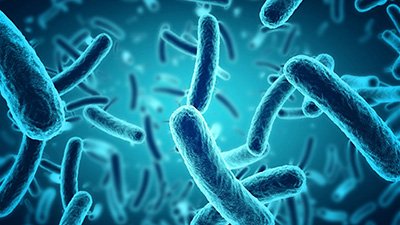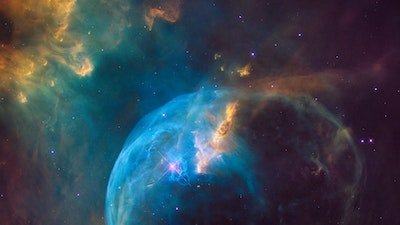Las Vegas, the Lottery, and the Origin of Life
How Many Genes Are Required to Make a Single-Celled Organism?
Las Vegas, the lottery, and the origin of life. What do these three things have in common? The house wins. Las Vegas casinos have the odds stacked against you. Many people buy a lottery ticket, but most never win the jackpot (and those that do usually file bankruptcy). The origin of life is so unlikely that every evolutionist ought to consider gambling at the casinos and playing the lottery on a regular basis because those odds are significantly better than a random chance process. Instead of 52 cards or 6 numbers in sequence, the origin of life requires over 100 genes to work. The odds of this happening were recently heralded with the synthesis of a minimal bacterial genome.
Evolution Is Stranger Than Fiction

Gregor Mendel. Image by Materialscientist, via Wikimedia Commons.
When Charles Darwin wrote The Origin of the Species, no one knew what the unit of inheritance was. Ironically, genetics, the science that studies inheritance, was founded at approximately the same time that Darwin published his book. Gregor Mendel was an Austrian monk interested in how different traits were passed on from generation to generation.1 With additional scientific advancements since Darwin, our views of inheritance and cells have radically changed. Today’s view of inheritance is based on the genes of an organism, also called its genome. Genome information exploded over the past five years with next-generation sequencing technology. But information doesn’t speak for itself. All scientists are human beings, and we all have a bias that we need to admit. I’m a biblical creationist, but let’s examine what the evolutionist says.2
According to the evolutionary worldview, the universe is approximately 14 billion years old, and life first appeared on earth almost 3.5 billion years ago. The two current worldviews on the origin of life require either 10 billion years (since the earth is 4.5 billion years old) or instant divine command—there is no middle ground. To be fair, Darwin didn’t write about the origin of life—just the origin of species. However, Darwin’s logic posits the origin of life because we had to come from somewhere. Every evolutionist agrees that the first cell was a significant moment in history. All questions on the origin of life hinge on our understanding of genetics because the first cell couldn’t just form and then die. Darwinian evolution requires both survival of the fittest and reproductive success. The first cell must have had all the characteristics of modern cell theory and the genes within for proper functioning.
Central Dogma of Molecular Biology
The “Central Dogma of Molecular Biology” states that DNA is synthesized into RNA, which makes proteins.3 DNA contains the information. RNA carries the message. Proteins do the work. You need to have DNA, RNA, and protein working together simultaneously or life cannot happen. Before we can address the origin of life, we need to better understand some of the basics of the central dogma.
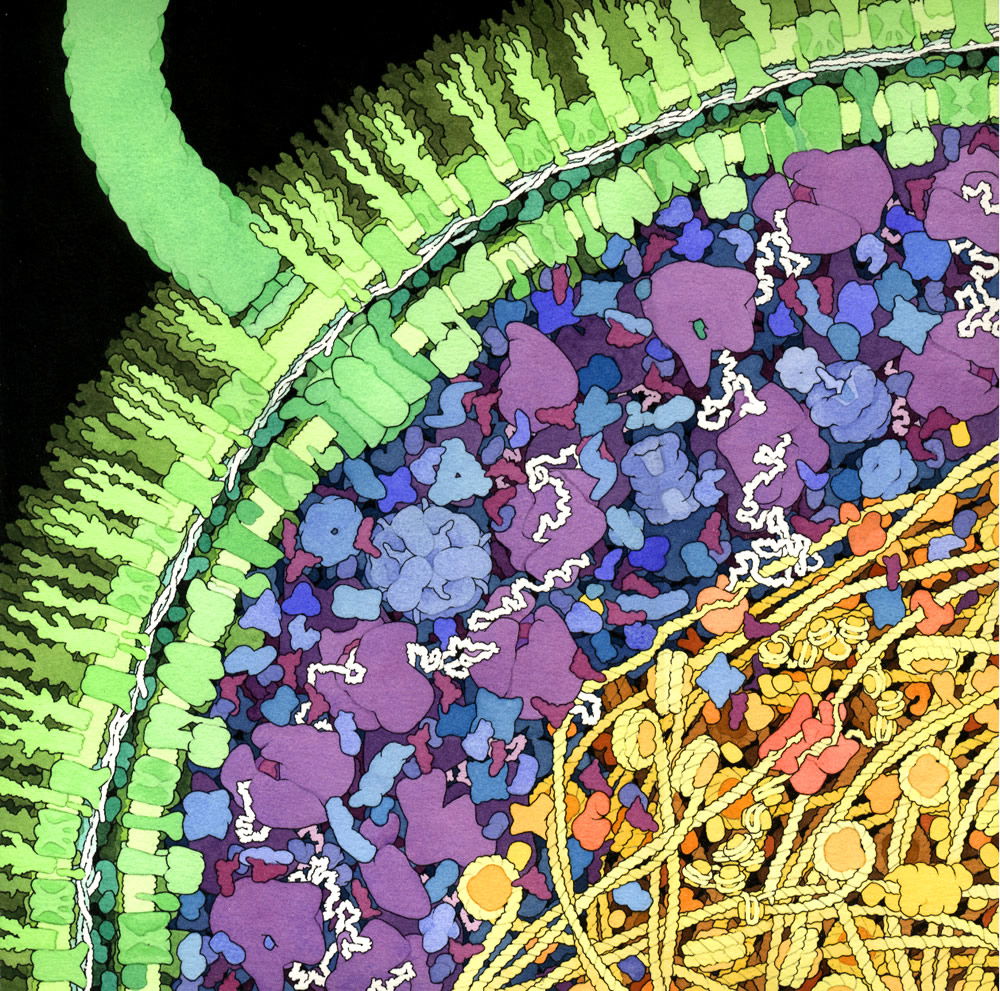
Escherichia coli. Image courtesy of David S. Goodsell, Scripps Research Institute.
All of the DNA in a cell is called the genome. The average E. coli genome has 4.5 million nucleotides,4 and they all fit within a cylinder that is 1 μm by 3 μm. The entire length of the E. coli genome would be approximately 1.53 mm long, which is 1,000 times longer than the size of the single cell! All of its DNA must be packed into a tiny space. The largest bacteria on record for many years were Epulopiscium fishelsoni, which can be larger than 600 μm by 80 μm, but the more spherical Thiomargarita namibiensis has replaced them with a diameter up to 750 μm. The smallest bacteria include microbes like Mycoplasma genitalium and Chlamydia trachomatis, which are less than 0.2 μm. The size of E. coli falls in the middle of the extremes, but it is interesting to note that these large and small microbes do not hold the records for the largest and smallest genomes. The largest bacterial genome belongs to Sorangium cellulosum with 13 million nucleotides, and the smallest bacterial genome is discussed below (Mycoplasma genitalium). Endosymbiotic bacteria have the smallest of all genomes. Hodgkinia cicadicola has a genome size of only 143,795 nucleotides and only 189 genes!5 It seems that the smaller genome sizes are found in microbes living inside cells—including some viruses.6 Claiming that virus genomes are small is only a relative description of the wide variation found across viruses. For example, there is a virus that has over 1 million nucleotides.7 While virus genomes are generally small, we cannot apply this observation widely or across all living things. In fact, all the variation for all living things (e.g., physical size and genome size) clearly demonstrates how absurd it is that this variation is cherry picked to prove evolutionary relationships.8 Cherry picking the variation within all living things to tell an overarching story becomes meaningless if it does not account for the widespread variation observed. Instead, this variation clearly is the handiwork of our Creator. Nevertheless, scientists want to know more about this in terms of how many genes are required for life.
Notable Minimal Genomes: Efforts to Determine Minimal Number of Genes
Significant variation within our universe cannot originate randomly, but requires an infinite Creator.
When considering the sizes and variations within the microbial world, the appropriate conclusion is to praise God for His marvelous handiwork. Significant variation within our universe cannot originate randomly, but requires an infinite Creator. Evolutionists believe in random chance and have tried to solve life’s origins by identifying the minimum number of genes necessary for what they consider the simplest life form. There are five basic approaches to determining what’s absolutely necessary: sequencing genomes, finding out which genes are turned on (i.e., expressed into RNA), deleting each gene separately for all identified genes, deleting large chunks of the genome, and supposedly creating life from scratch.
1. Sequencing genomes
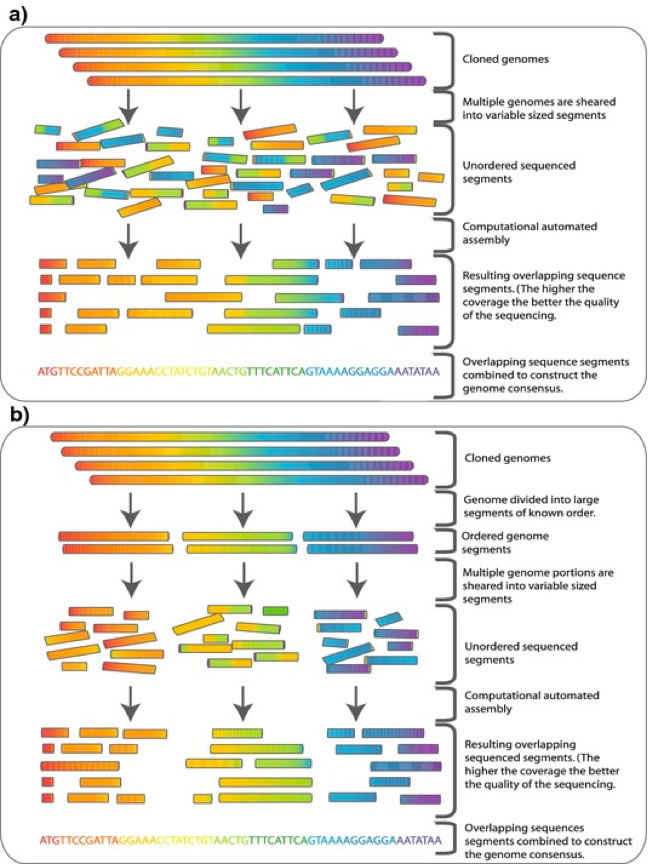
Genome Sequencing. Image by Becchamm, via Wikimedia Commons. View larger image.
Genome sizes were discussed in the previous section but are worth noting in the discovery of essential genes. Essential genes should be found in all living things. It is an important first step to know which genes are essential. The evolutionary irony is that we currently have no consensus sequence for the last universal common ancestor based on a comprehensive genomics analysis (i.e., there are no DNA sequences that are 100% identical across all of life). Therefore, it is difficult to assemble a comprehensive list of genes from sequence information alone. The smallest genome in nature is found in an Archaea called Nanoarchaeum equitans, which has 490,885 nucleotides and 552 coding DNA sequences (coding DNA sequences [CDSs] can be thought of as genes).9 The smallest bacterial genome in nature is found in Mycoplasma genitalium, which has 580,070 nucleotides and 470 predicted genes.10 Scientists tried to compare this genome with other available bacterial genomes to try to elucidate the number of genes essential for the proposed “first cell.”11 Their comparative genomics effort identified 256 genes as common to all life.12 However, many more bacterial genomes have been sequenced since their original effort, and the list of common ancestral genes continues to change. The lack of unity on essential genes is why the origin of life remains mysterious to evolutionists. If evolution were true, then finding the consensus backbone sequence for all of life would not be problematic.
2. Gene expression
Gene expression is extremely important for the Darwinian worldview if we want to know which genes existed in the proposed first unicellular ancestor. We often define a gene by its transcription (the process of transcribing the DNA into RNA). If a gene isn’t transcribed, then evolution tends to discard it over time. Surprisingly, we have only seen half of the E. coli genome (just over 200 genes) expressed under any circumstances.13 Discovery of new genes has become increasingly difficult because we are running out of varied conditions to use that will turn on genes. Because we don’t know what all the genes do, even in simple bacterial cells, we know very little about the genes essential for life. Many genes have never been transcribed under laboratory conditions. Since we do not completely understand which genes are essential and since we ultimately identify genes once they’ve been expressed,14 we can only infer those essential genes by whether they are turned on at some point (even under laboratory conditions). Defining a minimal gene set by gene expression is difficult because essential genes can be turned on at one time and turned off another.
3. Individual gene deletion libraries
The resources to study E. coli are tremendous. There is a collection of E. coli in which every gene has been removed (where possible).15 Using available resources for the E. coli genome, each gene was removed one by one, and scientists determined that 303 genes could not be removed under their growth conditions. They concluded that these 303 genes are the minimum number of genes required for life to exist. Those authors admit that there might be some bias involved with their particular growth conditions, but they were unable to delete 303 genes. These 303 genes fit well with the previous observations from genomics and gene expression for the minimal number of genes required for life.
4. Significantly reduced genomes16
Using an entirely different approach, scientists have removed large portions of non-essential DNA.17 Removing large portions of the genome has already proven useful in biotechnology (e.g., insulin production). Some scientists think we can thus learn about the evolution of the first cell. In studying the first cell, we cannot neglect the energy required to form every nucleotide in a genome because that energy for nucleotides could be used for alternative cellular functions. Reducing the number of nucleotides ought to be energetically favorable (according to evolutionists). An example of a significantly reduced genome includes one particular strain of E. coli.18 The normal E. coli genome contains 4.6 million nucleotides, and researchers were able to delete up to 708,267 nucleotides from the genome (15.27% was removed and it remained alive). An earlier attempt to reduce the E. coli genome reached almost 30% of the genome, but they found that the cell actually grew more slowly and had other difficulties.19 Other minimal genome projects include a long list of organisms from other bacteria to even some larger microbes like some fungi.
5. Creating Life in a Lab
The final approach to determine the minimal number of genes involves experiments that supposedly create life from scratch. The combination of genome sequencing and bioinformatics to build new DNA is called synthetic biology. The goal of synthetic biology is to recreate life and push its limits. Pushing the limits of life is supposed to help us understand our evolutionary past and help direct evolution in the future. Pat Mooney, of the ETC science watchdog group, said it well:
For the first time, God has competition. Venter and his colleagues have breached a societal boundary, and the public hasn’t even had a chance to debate the far-reaching social, ethical and environmental implications of synthetic life.20
In essence, synthetic biology scientists manipulate what God originally made to learn life’s limits. Over the past decade, synthetic biologists have made significant strides in learning the limits of life.
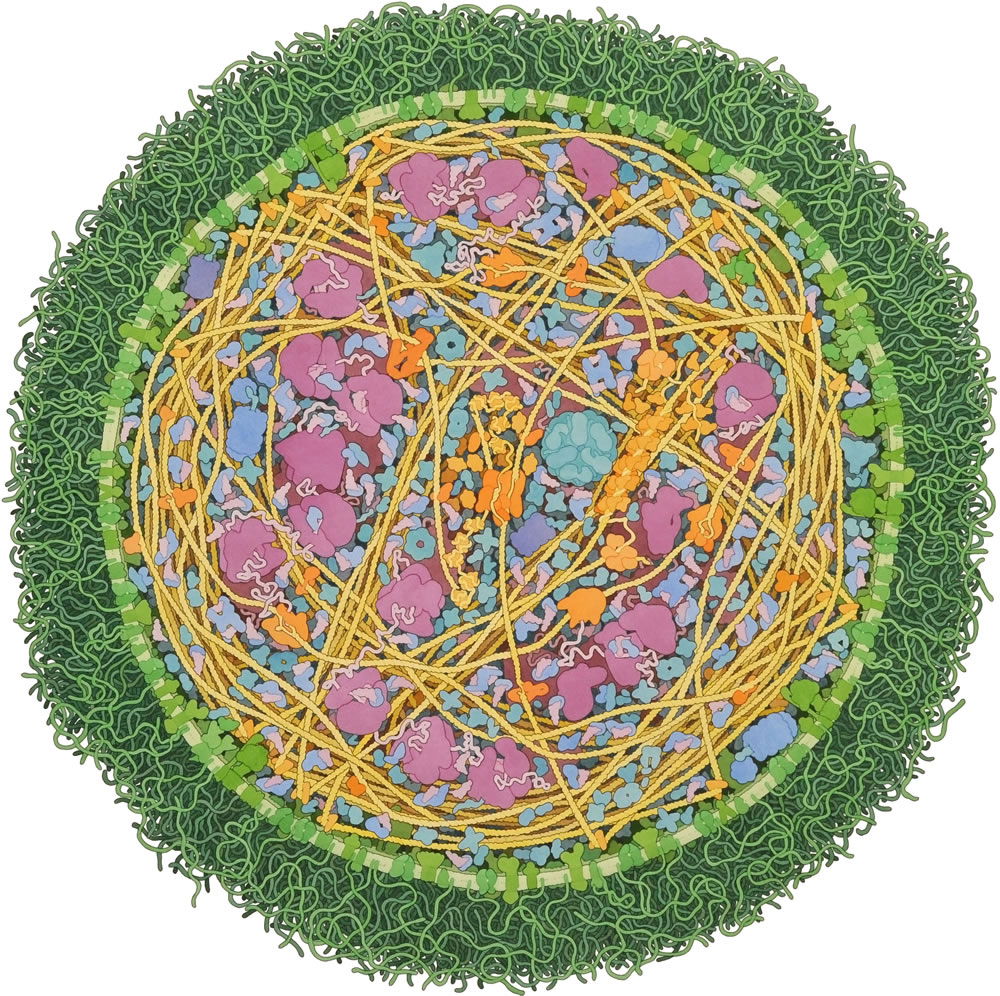
Mycoplasma mycoides. Image courtesy of David S. Goodsell, Scripps Research Institute.
While viruses aren’t necessarily considered alive, the first milestone in synthetic biology was synthesizing an entire virus genome.21 Until that time, no one had ever synthesized so many nucleotides that were long enough to supposedly make a cell under laboratory conditions—without using a cell. Scientists achieved the next milestone in synthetic biology when they synthesized an entire bacterial genome under laboratory conditions. Species of Mycoplasma are frequently used in synthetic biology because of their small genome.22 The synthetic bacterial genome was significant because they transplanted a synthetic Mycoplasma mycoides genome of 1,077,947 nucleotides into an empty Mycoplasma genitalium cell lacking its natural genome; the resulting strain was called JCVI-syn1.0. When scientists did this, they touted that they had created life in a lab for the first time. We should acknowledge the technology as advanced and cutting edge, but they didn’t actually create anything. Leading synthetic biologist Drew Endy clearly articulates that he doesn’t create life: he constructs it.
I think it’s a different question if the concerns have to do with making something new. I don’t view making something new, whether it’s reprogramming the bouquet of a bacteria or a more serious project. I don’t view those projects as creating life, but rather construction projects. For me as an engineer, there’s a big difference between the words creation and construction. Creation implies I have unlimited power, perfect understanding of the universe, and the ability to manipulate matter at a godlike level. That’s not what I have. I have an imperfect understanding, a budget, limited resources, and I can only manipulate things quite crudely. In that context, with those constraints, I’m a more humble constructor.23
He makes the distinction because he recognizes that he’s just using what’s available to try new things with the creation we already have. His view is more like a steward of creation rather than someone attempting Frankenstein.
Other synthetic genomes have been constructed in the lab, but these other organisms have larger genomes.24 The larger synthetic microbes are significant for industrial reasons (e.g., antibiotic production), but they do not adequately address the minimum number of genes required for life. Instead, we should consider the smallest synthetic genome.
The irony to all of these headlines is that they use words from a creation worldview to describe an evolutionary story.
The first synthetic bacteria contained a synthetic Mycoplasma mycoides genome, and was known as strain JCVI-1.0, which had 582,970 nucleotides with 528 genes. Another Mycoplasma mycoides strain’s genome was synthesized in a lab like the previous one, but strain JCVI-syn3.0 has 531,560 nucleotides and 473 genes (that’s 51,410 fewer nucleotides).25 With this recent synthetic genome having so few genes, many news stories heralded this feat as one step closer to the origin of life.26 The irony to all of these headlines is that they use words from a creation worldview to describe an evolutionary story. It could be their play on words, but the fact remains that it took an intelligent agent to put something like this together. This team of researchers didn’t just walk into the lab one day with a surprisingly novel organism that shed almost half its genome. Does anyone really consider the math behind these claims?
What Are the Odds?
The two main competing worldviews have wildly different views on how the first cell came into existence. The evolutionary worldview says the universe began approximately 13,800,000,000 (13.8 billion) years ago, and life evolved ~3.5 billion years ago.27 In contrast, the biblical worldview says that the universe and life began ~6,000 years ago. The number of minimal genes that have been determined empirically ranges from 189 genes to 552 genes. A similar number of minimal genes has been discussed in scientific review articles and estimated to be between 256 genes and 206 genes.28 So this minimal number of genes begs the question whether an evolutionary worldview has enough time to assemble a primordial cell from a minimum number of genes.

Image by Octahedron80, via Wikimedia Commons.
Rather than pick a number too high or a number too low, I will arbitrarily pick 250 genes for simplicity’s sake. According to evolution, the amount of time for the origin of life to happen is from the big bang to the first evidence of life.29 So the universe is 14 billion years old, and the first appearance of life happened 3.5 billion years ago. The time then required for life to appear in our universe on an evolutionary time scale is 11 billion years (1.1 x 1010 years). For argument’s sake, we will give evolutionists all the necessary genes for the minimal genome.30
Figuring out how probable it is for 250 genes to come randomly together is like searching for a 250-piece puzzle that’s already together inside its box. Does anyone expect to open a puzzle box with all 250 pieces put together? Furthermore, in this analogy, you must find that puzzle intact or die. Would you be willing to search for such a box anywhere on the planet knowing you have such likely odds of dying? Those are the odds demanded for the origin of life.
To calculate all the possible combinations, the factorial would be
250 x 249 x 248 x 247 x · · · x 3 x 2 x 1.
Remember, this is for the minimal gene set: missing only one means death just the same. The number of possible combinations for 250 essential genes is 3.233 x 10492 combinations.31 To gain an appreciation for how many combinations this is, we can factor how much time the evolutionists estimate for the origin of life. The number of nanoseconds in 11 billion years means that evolutionists have 3.471 x 1026 nanoseconds available to go through all possible combinations for the minimal number of genes. Evolutionists would thus have us believe that 9.314 x 10465 combinations must have happened every nanosecond. Even if the number of combinations per nanosecond are cut in half (assuming—to the benefit of evolutionary reasoning—that the reaction happens half-way through), that’s still approximately 4.657 x 10465 combinations per nanosecond that evolution would have needed for primordial life to even exist. Consider that some of the fastest inorganic chemical reactions are observed to happen in 105 combinations per nanosecond.32
As if these odds weren’t abysmal, evolutionists now suggest that life originated multiple times.33 Instead of admitting how extreme the odds are for the origin of life, evolutionists have only multiplied this unlikelihood even further beyond the known universe. Increasing the already unlikely odds for the origin of life strains common sense and is, in fact, entirely unreasonable.
Conclusion
Empirical science so strongly supports Scripture that it requires willful ignorance of empirical truth to suggest a random origin of life.
Since the simplest explanation usually is best,34 the only way to explain the immensely astronomical odds for the origin of life must be an infinite source of life. Life must be miraculous because our existence is not sufficient proof of the origin of life. It is more than reasonable to dismiss the random origin of life even with all ~250 genes present because the odds for the origin of life oppose empirical science. Empirical science so strongly supports Scripture that it requires willful ignorance of empirical truth to suggest a random origin of life (Romans 1:20–21). Professor Stuart Burgess has pointed out how Romans 1:20–21 finishes by saying, “neither were [they] thankful.” When we stop thanking God for the miracle of creation, we lose focus on our Redeemer Creator. Though we may not always thank God for the minimal number of genes, right now would be an appropriate time to do so. In many ways, we apply what we learn in our approach to the minimum number of genes to the Christian life. God does not want us to just accept Christ, but He wants us to have a fulfilling and purposeful life. We should not settle for the least amount required to live for Him now but should aim for the most glory He can receive through all aspects of our life.
Footnotes
- Even more ironic is that a copy of Mendel’s work was found on Darwin’s bookshelf after Darwin died, but Darwin never opened it. When you visit his personal library, it’s on the shelf and is still wrapped. You can visit the Down House and see it for yourself. Just because Darwin never opened Mendel’s work doesn’t mean that Darwin would have decided to change his mind. Equally interesting is the fact that cells had just been discovered, and Darwin viewed them as meaningless blobs. Further, Mendel’s work went largely unnoticed for nearly 50 years until it was rediscovered by some plant geneticists in the early 1900s.
- In the movie, Toy Story, Buzz Lightyear says, “There seems to be no sign of intelligent life anywhere.” The context for this quote is that a growing number of scientists believe life began somewhere else in the universe. That’s a fancy way of saying that aliens made life elsewhere and sent it to earth. Some notable people holding to this view are the codiscoverer of the structure of DNA, Francis Crick, and well-known astronomer Fred Hoyle. I recently saw a textbook called Biology: Life on Earth, which significantly hints that alien life seems reasonable. A significant amount of wisdom comes from Buzz Lightyear. By the end of this article, you will see this quote corrected with truth.
- While the flow of information goes from DNA to RNA to protein, there is one enzyme found in HIV called reverse transcriptase that allows for synthesis of DNA from RNA. Discovery of reverse transcriptase won the Nobel Prize and has revolutionized modern research and medicine.
- There are four nucleotides found in DNA: Adenine (A), Cytosine (C), Guanine (G), and Thymine (T). These nucleotides are the genetic code of life.
- By way of comparison to other membrane-bound DNA found inside cells, the chloroplast genome of the model organism Arabidopsis thaliana is 154,478 nucleotides.
- According to evolutionists, there is debate about whether viruses are alive or not. Bacteriologists tend to say viruses are not alive but virologists say they are alive. For the sake of this paper, I will consider all things as living to more easily oversimplify and communicate.
- It was originally debated whether the virus, Megavirus chilensis, was a cell or not because it was so large.
- I intentionally left out the variation of shape. There are the basic bacterial shapes of rods and cocci, but there are also rectangular bacteria as well as star-shaped bacteria. Never mind the bacteria that are literal shape changers, like Mystique in the X-men.
- Archaea are one of the three domains of life as identified by Carl Woese. The Archaea are extremely similar to bacteria in that they both lack a nucleus. The nucleus is one of the defining features of eukaryotes (like us). Archaea are typically found living in extreme conditions like hot springs in Yellowstone National Park or very salty places like the Dead Sea. Evolutionists consider Archaea to be the oldest forms of life on the planet.
- Predicted genes are determined based on using computer algorithms to look for genes in digital sequence data. Genes remain predicted until someone observes the gene to be turned on in the form of making RNA or protein.
- Arcady R. Mushegian and Eugene V. Koonin, “A Minimal Gene Set for Cellular Life Derived by Comparison of Complete Bacterial Genomes,” PNAS 93, no. 19 (1996): 10268–10273.
- “Here we use the results of a detailed comparison of M. genitalium and H. influenza proteins to derive and characterize the minimal gene set compatible with modern-type cellular life. We then discuss possible directions of a further reduction that may be undertaken to model a primordial cell.” Ibid.
- Speaking from experience, the general rule of thumb is that most genes are not important for competitive colonization of the mammalian intestine. If you read the figure legends closely on my secular publications, you can see that the list of genes we actually reported were a small fraction of the total genomic content of E. coli.
- There is a possibility that the gene has been broken and was incorrectly identified as a functional gene today.
- Tamoya Baba , et al., “Construction of Escherichia coli K-12 In-frame, Single-gene Knockout Mutants: the Keio Collection,” Molecular Systems Biology 2, no. 1 (2006): 8, doi:10.1038/msb4100050.
- The entire discussion of essential genes for life hinges on a definition of life. The common definition of living things found in secular textbooks includes “reproduction,” “response to stimuli,” “metabolism and growth,” “made of cells,” “maintain homeostasis,” and “adapt to their environment.” The Bible does not provide such a definition, but that does not preclude using this definition for the sake of discussing the minimal gene set. Most scientists I talk with about reducing genomes often highlight whether these cells are even alive; scientists question the life because these cells depend on so many biosynthetic precursors from their growth media that they cannot sustain life on their own.
- These DNA sequences are often inappropriately called “junk” DNA. Other deleted portions of DNA are already known to be capable of removal by the previous deletion libraries or from other experiments. For example, insertion sequences are not necessary for life. Other genes include virulence factors responsible for causing disease.
- György Pósfai, et al., “Emergent Properties of Reduced-Genome Escherichia coli,” Science 312, no. 5776 (2006): 1044–1046.
- Michinao Hashimoto, et al., “Cell Size and Nucleoid Organization of Engineered Escherichia coli Cells with a Reduced Genome,” Molecular Microbiology 55, no. 1 (2005): 137–149.
- “Patenting Pandora’s Bug: Goodbye, Dolly . . . Hello, Synthia!,” ETC Group, June 7, 2007, http://www.etcgroup.org/fr/node/631.
- The first virus made in the lab using a computer was the polio virus. No virus preceded it. It was made directly from cDNA synthesis and expression inside tissue culture cells. My biochemistry professor and dissertation committee member in graduate school often remarked that my biochemistry professor began sequencing the human genome with the smallest chromosome rather than the largest chromosome. There is a practical aspect to choosing a small virus for such an enormous stride in science.
- The general trend acknowledged by evolutionists is that an endosymbiotic lifestyle does not require a vast gene repertoire. Endosymbionts (pathogenic or commensal) often rely on the host cell for important biosynthetic building blocks like amino acids. So the endosymbionts do not require entire biosynthesis anabolic pathways.
- Alexander Reed, “Designing Life a Look at Synthetic Biology,” Helix, January 21, 2009, http://helix.northwestern.edu/article/designing-life-look-synthetic-biology.
- Notable synthetic genomes include larger bacteria (i.e., Streptomyces) and yeast (i.e., Saccharomyces).
- Clyde A. Hutchison III et al., “Design and Synthesis of a Minimal Bacterial Genome,” Science 351, no. 6280 (2016): 1414, 6253–4.
- Matthew Herper, “After 20 Year Quest, Biologists Create Synthetic Bacteria With No Extra Genes,” Forbes, March 24, 2016, http://www.forbes.com/sites/matthewherper/2016/03/24/bio-maverick-craig-venter-hacks-bacteria-to-have-tiniest-possible-genetic-code/; Robert Lee Hotz, “Scientists Claim to Have Created Independent Organism With the Smallest Genome,” March 24, 2016, http://www.wsj.com/articles/scientists-claim-to-have-created-independent-organism-with-the-smallest-genome-1458842674; Ruth Williams, “Minimal Genome Created,” The Scientist, March 24, 2016, http://www.the-scientist.com/?articles.view/articleNo/45658/title/Minimal-Genome-Created/.
- Some believe life came from outer space (panspermia). Ironically, they’re actually suggesting that the laws of nature only apply on earth and are not universal.
- The 206 genes are actually listed in the paper in a table format.
- These numbers are rounded for argument’s sake and favor the evolutionists’ time scale.
- This focus addresses neither how the parts evolved in the first place nor how they evolved afterwards.
- 3,233,000,000,000,000,000,000,000,000,000,000,000,000,000,000,000,000,000,000,000,000,000,000,000,000,000,000,000,000,000,000,000,000,000,000,000,000,000,000,000,000,000,000,000,000,000,000,000,000,000,000,000,000,000,000,000,000,000,000,000,000,000,000,000,000,000,000,000,000,000,000,000,000,000,000,000,000,000,000,000,000,000,000,000,000,000,000,000,000,000,000,000,000,000,000,000,000,000,000,000,000,000,000,000,000,000,000,000,000,000,000,000,000,000,000,000,000,000,000,000,000,000,000,000,000,000,000,000,000,000,000,000,000,000,000,000,000,000,000,000,000,000,000,000,000,000,000,000,000,000,000,000,000,000,000,000,000,000,000,000,000,000,000,000
- Jürgen Wolfrum et al., ed., Gas Phase Chemical Reaction Systems: Experiments and Models 100 Years After Max (Berlin: Springer, 2012), 112.
- Part of the issue with the origin of life has been the lack of a universal phylogenetic tree of life. Rather than addressing phylogenetic incongruities, evolutionists have decided that it is easier to have multiple origins of life than to resolve how difficult the phylogenies are.
- I once had an evolutionary scientist tell me that evolution is true because of Occam’s Razor. It’s ironic how that argument presupposes logic in a random universe. Occam’s Razor states that the simplest explanation is best. So why not equally retort that creation is true because of Occam’s Razor? Furthermore, we have excellent reason beyond using Occam’s Razor to arrive at this conclusion.

Answers in Genesis is an apologetics ministry, dedicated to helping Christians defend their faith and proclaim the good news of Jesus Christ.
- Customer Service 800.778.3390
- Available Monday–Friday | 9 AM–5 PM ET
- © 2025 Answers in Genesis



